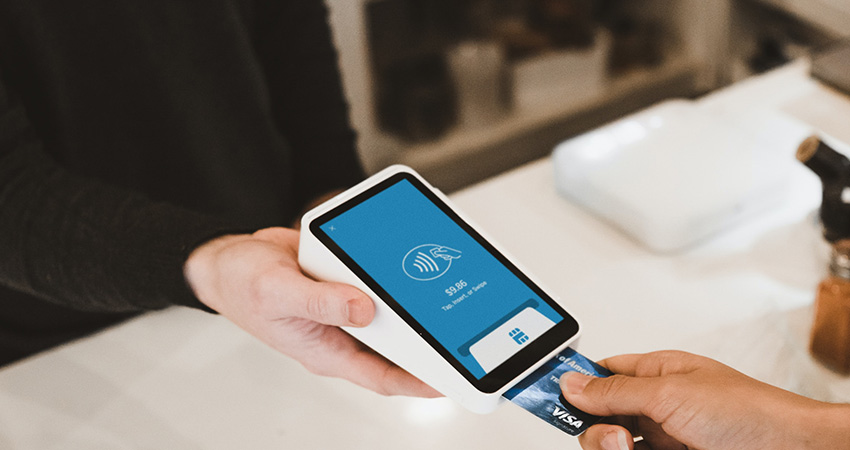Card-linked offers, such as “get 5% cash back at Retailer X,” have become ubiquitous in online banking. And although the targeting of these offers has improved, for most customers, these offers have looked fairly similar for more than a decade.
The big question consumers tend to have is, “Why don’t I get offers from the merchants with whom I spend the most money?” The answer has to do with the limitations of bank-transaction data.
Unintended Consequences
The Durbin amendment, also known as Regulation II, requires the Federal Reserve to limit fees charged to retailers for debit card processing. It was a last-minute addition by Illinois Sen. Richard Durbin to the Dodd-Frank financial reform legislation of 2010.
The law severely limited the revenue from interchange that financial institutions relied upon to deliver rewards to their debit card customers. As a way to fill that gap, several startups aimed to create “merchant-funded rewards,” wherein financial institutions could give merchants access to their rich transaction data and large online banking audience, enabling them to deliver rewards to banking customers.
Customers would digitally link an offer to their card, and then shop as they normally would. With each swipe at a participating merchant, cash would be credited back to their account. This eliminated the need for paper coupons, QR codes and other manual methods that created friction (and long lines) at the cash register.
Thus a new industry was born, as Cardlytics, TruAxis, FreeMonee, Edo Interactive and others all vied to create a new marketing channel connecting merchants, financial institutions and their customers. These companies quickly realized that the phrase “merchant-funded rewards” resonated poorly with merchants, so they replaced it with the friendlier “card-linked offers.”
Card-linked offers initially appeared to offer an interesting niche, but not a channel worth serious marketing dollars. After a few years, though, larger institutions such as Bank of America, Chase, American Express, Wells Fargo and Citibank realized they were here to stay. Such offers were driving some of the highest Net Promoter Scores ever recorded for banking products, an uptick in card usage and lower attrition rates from checking account customers.
At the same time, the CLO platform companies were getting more sophisticated, creating advanced targeting options, incremental sales measurement and wallet-share insights. As more financial institutions opened up their customer base and associated transaction data, the industry’s scale attracted marketing spend that had previously gone to direct mail and other digital channels.
As the card-linked offer industry grew, marketers spent even more on it. But some banks began getting questions from their customers. They wanted to know why they weren’t receiving offers for the places they shopped the most, including supermarkets, convenience stores and big-box stores like Walmart and Target.
To understand why they weren’t getting those offers, let’s look at supermarkets. Grocery represents the largest percentage of retail spend in the U.S. The average household spends $4,643 on groceries per year, based on 2019 data from the U.S. Bureau of Labor Statistics. Conventional grocery store chains have an average profit margin of only 2.2%. The main reason the margins are so low is competition and commodity. There are 38,307 grocery stores in the U.S., according to Statista, or one for every 5,459 adults.
Why does that matter? Because limited margins lead to small marketing budgets. Grocers rely on manufacturers to advertise. Major CPG Procter & Gamble spent $4.28 billion in the U.S. in 2019 to drive customers to supermarkets and other stores carrying their products.
Yet for companies like that to run card-linked offers, they would need to understand which products people buy as a result of such offers. And that’s where the limitations of CLO companies come into focus.
Level 2 vs. Level 3 data
Level 2 data is passed to your bank when you swipe your card at a store. It shows up in your banking statement, and includes the date of the transaction, the name of the merchant and the amount.
There is no mention of which products were actually purchased — and that’s essentially what Level 3 data is. Also known as SKU-level data, it describes the data you find on your store receipt.
In order for customers to receive card-linked offers from supermarkets and other large retailers that rely on manufacturer dollars to advertise, it’s necessary to integrate the SKU-level data from the receipt with the bank’s transaction data — that is, to add Level 3 data to Level 2 data. If that were to happen, CLO companies could provide product-level offers (“Shop for Pampers at Walmart and get $5 cash back!”), or even category-level offers (“Buy groceries at Target and get $10 cash back!”). This would also enable more advanced targeting and deeper measurement of campaign performance, so merchants and brands can finally understand which offers work best.
It is past time for card-linked offers to evolve. When they do, customers, marketers, and financial institutions will all enjoy the rewards.
Arlo Laitin is Chief Revenue Officer at Banyan

